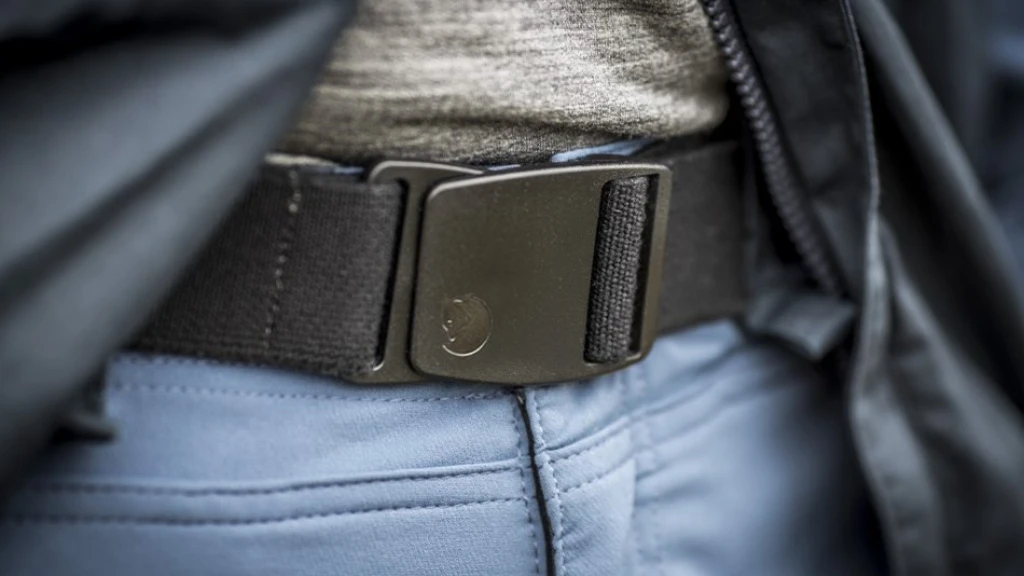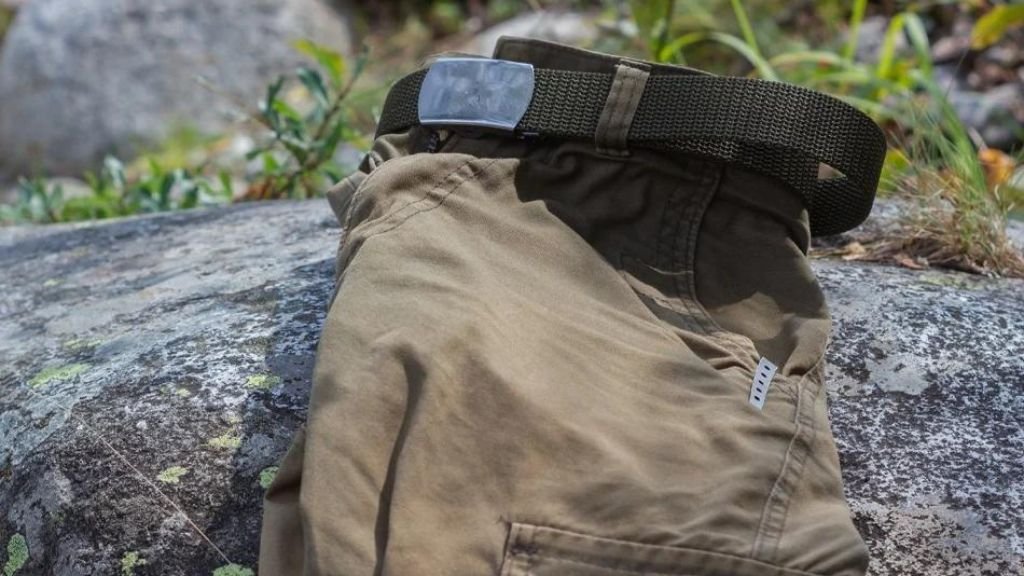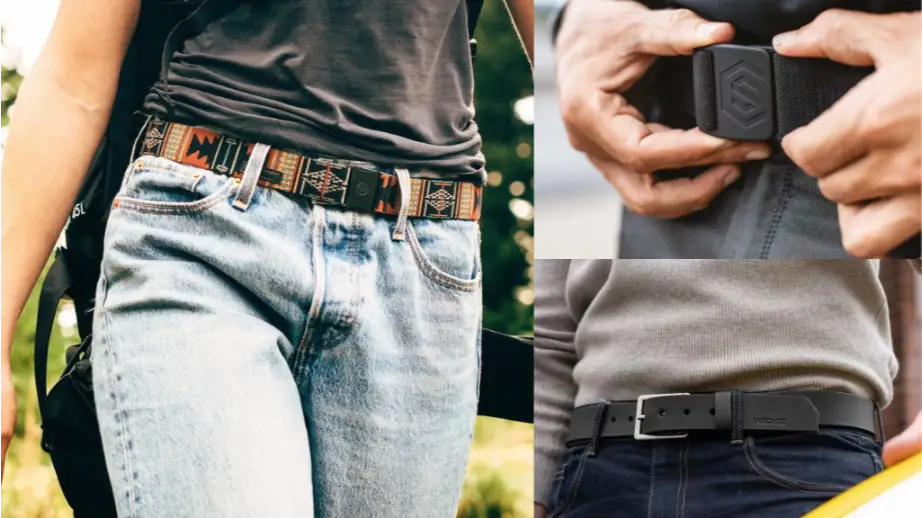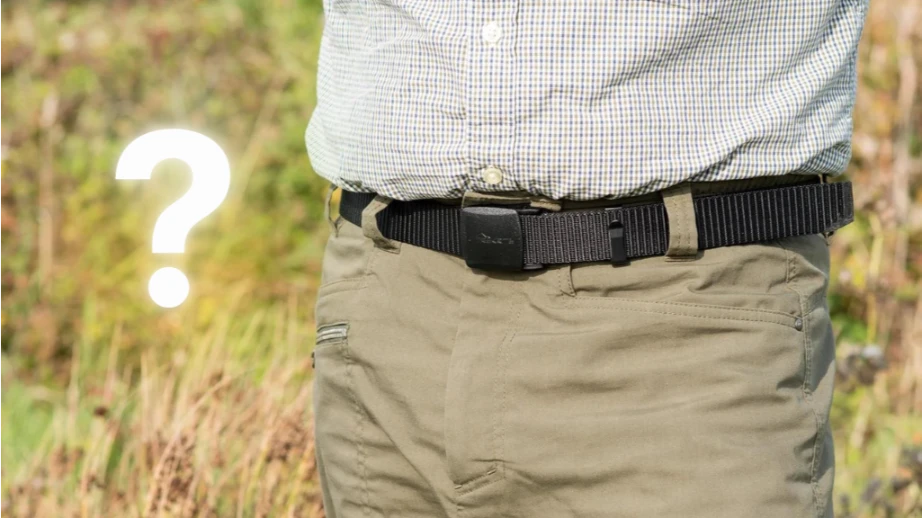One piece of equipment that often doesn’t get the limelight it deserves is the humble hiking belt.
I’m a huge fan of hiking pants with built-in belts. They’re convenient, comfortable and I can skip the whole ordeal of picking a separate belt. But those pants can be quite expensive, and not everyone wants to shell at least $100 on them.
Hiking belts are affordable, reliable, and can be used with any pair of pants you own!
Among the ones that stood out for me are Arcade Belts, Bison Designs, and Fjallraven. These brands have consistently delivered top-notch quality, durability, and comfort.
Ready to buckle up? Let’s explore some of the best lightweight hiking belts for both men and women.
Best Hiking Belts for Men & Women
Best Overall: Arcade Belts Atlas Belt | Check Price
Best Comfort: Bison Designs Stealth Belt | Check Price
Best Versatility: Fjallraven Keb Trekking Belt | Check Price
Best on Budget: Bison Designs T Lock Money Belt | Check Price
Best Stretch: Arcade Belts Out Of Range Belt | Check Price
Arcade Belts Atlas Belt

KEY FEATURES
PROS
CONS
Are you the kind who hikes almost daily, in all weathers and terrains? If you are, the Arcade Belts Atlas Belt will be the most durable belt you’ll ever wear.
It’s a belt that’s so comfortable you hardly notice it’s there. The microadjustable buckle that this belt features is something I particularly love. It allows you to dial in the exact fit, so you’re comfortable throughout your hike.
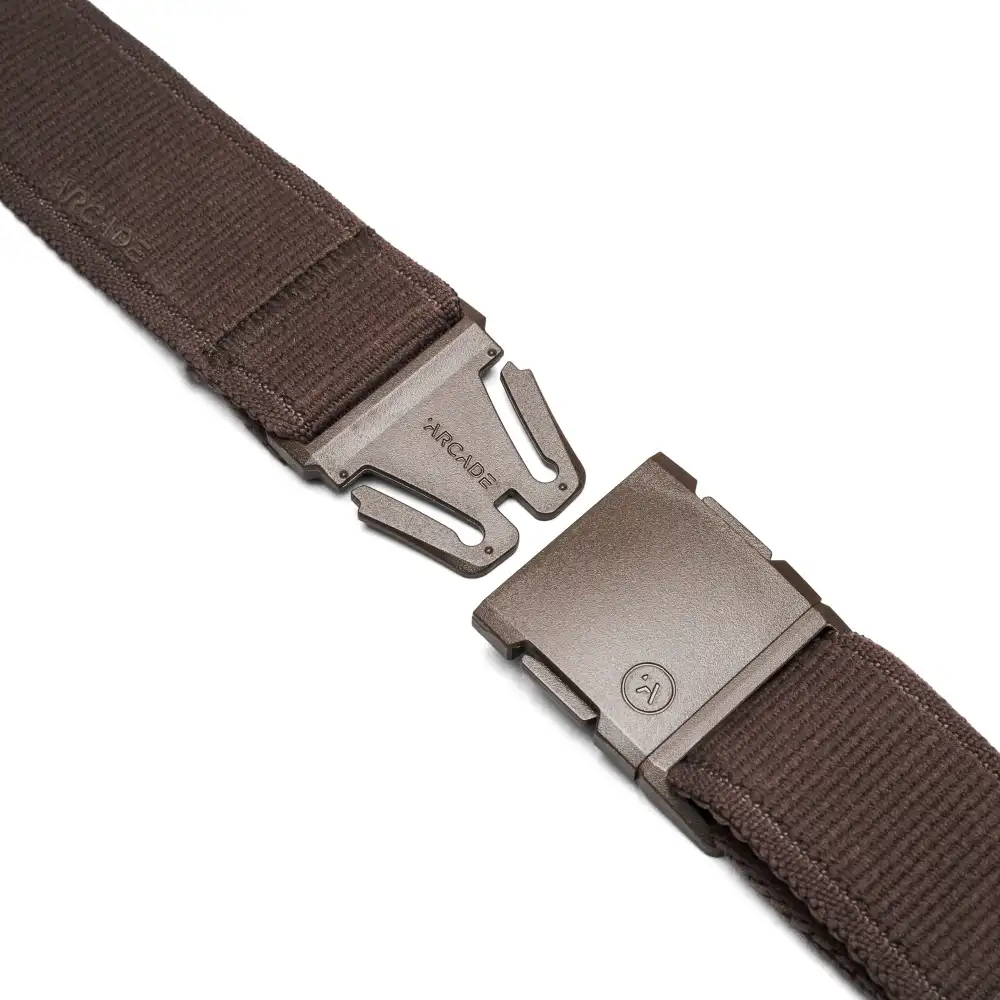
This belt may require some initial adjustment to fit snugly, but once adjusted, you’re all set for your exciting hiking trips.
Apart from being a statement accessory, it’s a belt that follows the curve of your form, providing maximum comfort even during your longest hikes.
85% of the belt webbing is made of recycled REPREVE polyester, contributing to the environment. It is made by repurposing postconsumer plastic bottles that would have otherwise ended up in landfills. How cool is that?
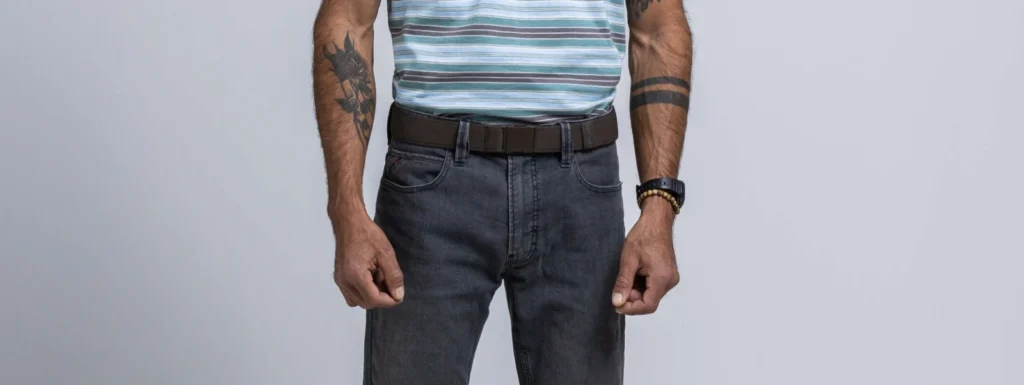
Apart from being eco-friendly, the belt has a nearly perfect rating, a whopping 4.9 out of 5 stars on REI, making it a highly recommended accessory for both men and women who enjoy outdoor activities.
Some of us prefer a slimmer belt and Arcade Belts has us covered there too. They offer a slim version of the Atlas Belt, which you can find here.
Verdict
Grab this stylish, sustainable and sublimely comfortable Arcade Belts Atlas Belt and upgrade your hiking gear. It’s a sleek-looking belt that fits good and looks good!
Bison Designs Stealth Belt

KEY FEATURES
PROS
CONS
I was instantly drawn to its combination of ruggedness and simplicity. With such a high star rating of 4.8 out of 5, I was intrigued to test this accessory out on my hikes.
So, how did it hold up on the trails? Brilliantly. I’ve used this belt on two different hikes so far, and I must say, it’s doing its job well.
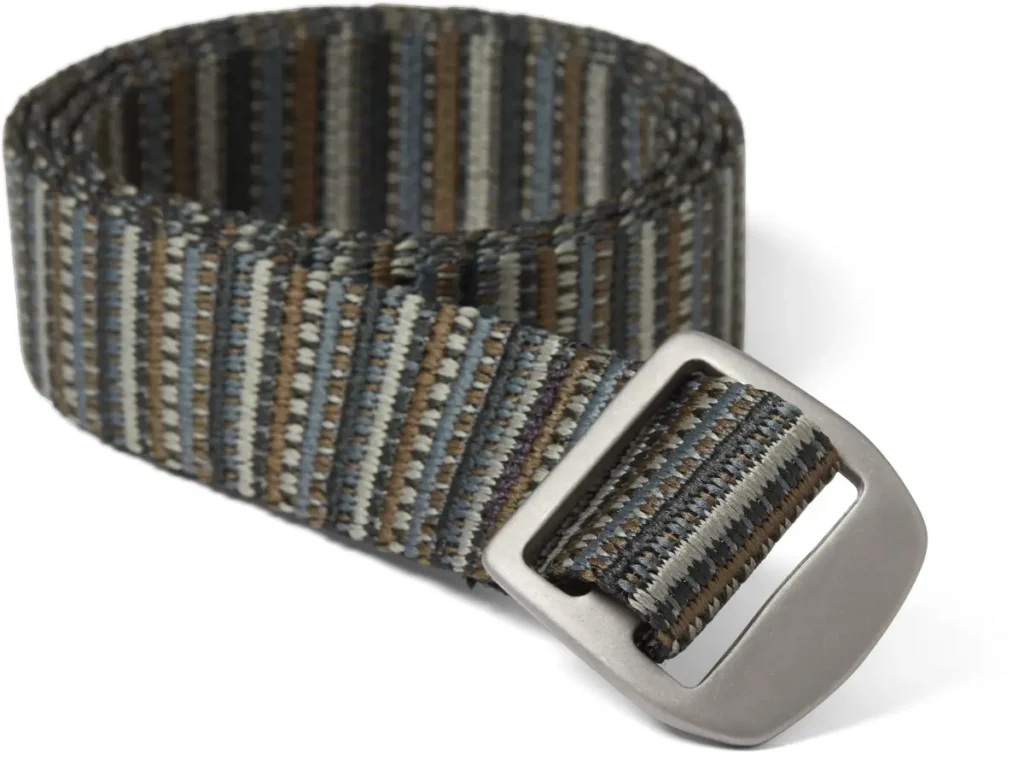
The Bison Designs Stealth Belt isn’t just your ordinary belt. It’s crafted with an emphasis on durability and comfort, designed to withstand harsh conditions.
It’s a tad difficult to thread through belt loops, but it isn’t something you can’t get the hang of after a few tries. I’d say the added security it provides outweighs this initial hurdle.
Why should you choose this belt over other options? With a sturdy design and a high-performance rating, it’s a belt that promises not to let you down when you need it most.

Verdict
If you’re in the market for a reliable hiking belt, give the Bison Designs Stealth Belt a look. Its performance has impressed me, as it has many other hikers, securing its place as one of the best hiking belts available today.
Whichever trail you’re planning to conquer next, this belt is definitely one to consider.
Fjallraven Keb Trekking Belt
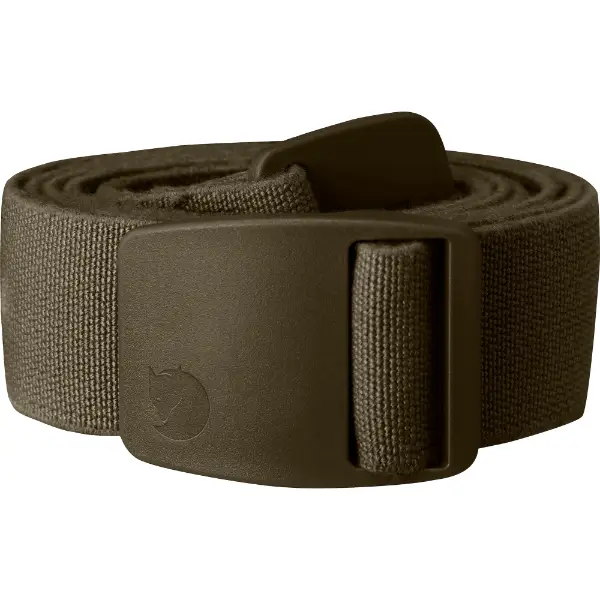
KEY FEATURES
PROS
CONS
Being a devoted fan of Fjallraven products, I can say this is their finest hiking belt yet.
One of its key features? It sits well under a backpack’s hipbelt. If you’re like me and always have a backpack with you on your hikes, you’re going to love this. It’s comfortable, and does not interfere with your pack at all.
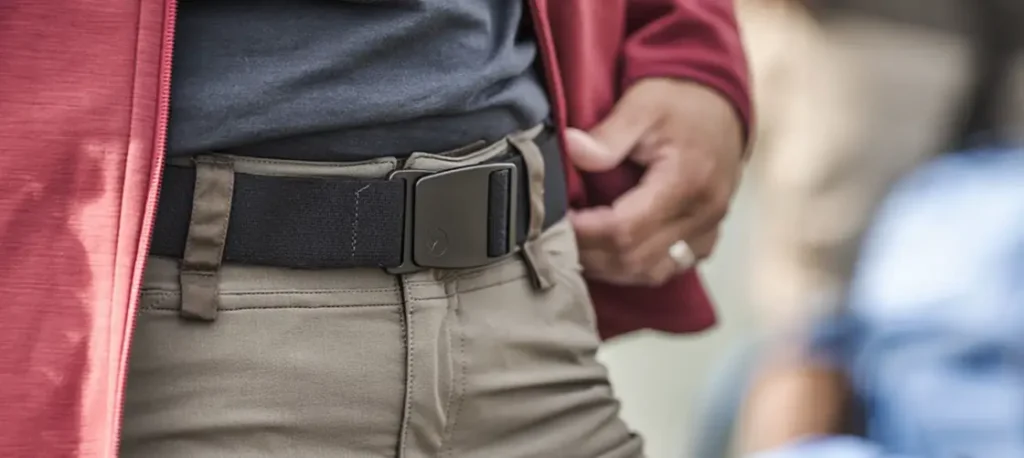
The plastic buckle is easily adjusted. I found it a bit tricky to unlatch at first but after a few tries, you’ll get the hang of it.
While this belt is fantastic in many ways, it might not be a perfect fit for all pant loops. I checked it on different pants I own, and found it ideal for most.
It’s TSA-friendly, so you can breeze through security at airports without having to remove your belt and at 2.8 ounces, this belt won’t add any unnecessary weight to your hiking gear.
Verdict
The Fjallraven Keb Trekking Belt is a combination of efficient design, comfort, and practicality that makes it stand out.
Before you go ahead and purchase it, I’d recommend you measure your loops to make sure it’ll fit just right.
Bison Designs T Lock Money Belt
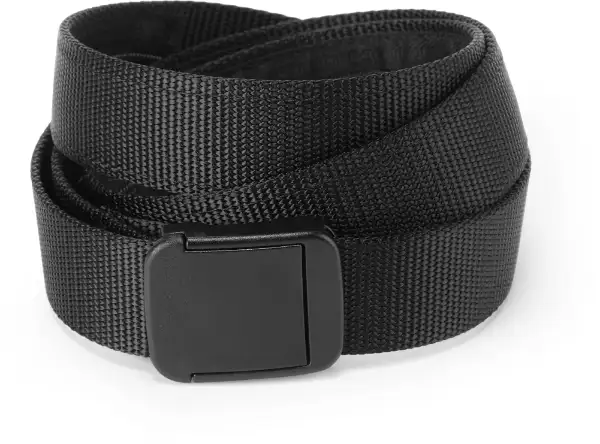
KEY FEATURES
PROS
CONS
It’s been a year since I bought the Bison Designs T Lock Money Belt and it continues to impress me with its durability. This belt stands tough, showing practically no signs of wear and tear.
You can breeze through TSA checkpoints wearing these belts – it won’t set off those noisy metal alarms.
This belt isn’t just for holding up your pants – it’s far more than that and that’s what I appreciate the most about them.
This belt is kind of unique as it comes with a 28 x 1.25 in. zipper pouch, a concealed and secure spot where you can stash your cash while on the go.
It’s a far safer option than leaving your money in a room or a tent. The pouch can hold a considerable number of bills, but you’ll need to fold your bills in thirds lengthwise to pull it off.

Verdict
The Bison Designs T Lock Money Belt is the most travel-friendly option for me as it offers a safe cash storage solution and it’s remarkably durable. It’s hard not to recommend it!
Arcade Belts Out Of Range Belt
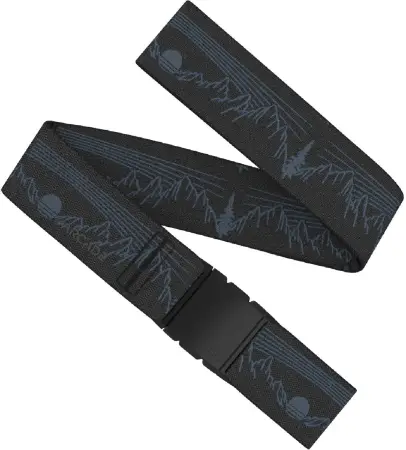
KEY FEATURES
PROS
CONS
This belt gets the job done, and does it really well. It’s stretchy and it moves with your body, which is a big plus for me.
Does the stretchiness affect its durability? Absolutely not! Not only is it made of 85% REPREVE postconsumer recycled polyester, but its buckle is molded from high-density plastic.
It’s friendly to our planet and tough on the trail at the same time, which adds to the list of its benefits.
Since I started to wear it, I have not experienced a single instance of chafing as well. Thanks to the metal-free design of the Arcade Belt, I have no problems with security checks.
Verdict
The Arcade Belts Out Of Range Belt offers stretchiness, comfort, durability, and a metal-free design, making it a versatile and valuable essential for any hiker.
What Is a Hiking Belt?
If you’re like me, you probably started out hiking with just a regular belt. But over time, I realized that typical belts just don’t cut it on the trail. They’re either too heavy, too rigid, or too uncomfortable for long treks. That’s when I discovered the hiking belt.
Unlike a regular belt, a hiking belt is lightweight and flexible. It’s made from materials like nylon webbing which are designed to withstand the rigors of outdoor activities.
They’re also adjustable to fit your body perfectly – no need to worry about holes that never seem to line up right!
But perhaps the best thing about hiking belts? Their simplicity. They’re a single piece with no moving parts, relying on friction to stay in place. You can focus on the trail ahead instead of fussing with your belt.
One of my personal favorites is the Arcade Belts Atlas Belt. What sets it apart is its elastic stretch webbing which allows for a snug and comfortable fit without ever feeling too tight. It’s also lightweight, quick-drying, and machine washable – perfect for any adventure.
Next time you head out for a hike, leave that regular belt at home. Once you switch to a hiking belt, there’s no going back!
Should You Wear a Belt While Hiking?
You can wear a belt while hiking, but it shouldn’t be just any old belt. It’s got to be a specialized, comfortable one.
Brands like Arcade Belts and Bison Designs, have truly nailed the art of designing belts specifically for hiking. They’re comfortable, durable, and won’t chafe or irritate even after hours on the trail.
How to Choose a Hiking Belt?
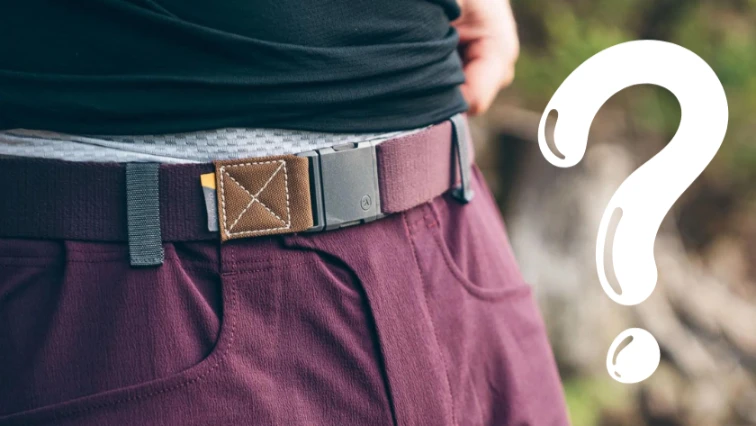
Material Matters
The first thing you want to consider when choosing a hiking belt is the material. And while leather belts may look stylish and rugged, I usually steer clear of them because they’re thick and heavy.
When you’re hiking for hours, you want something lightweight and breathable and that’s why webbing belts are my go-to choice.
They’re thin, light, and don’t add unnecessary weight to your gear. They’re pretty comfortable too.
Functionality Over Fashion
Sure, a stylish belt might look great in your Instagram photos, but when you’re halfway up a mountain, style won’t matter much. What you need is a belt that’s functional. Look for features like:
- Quick-release buckles
- Adjustable lengths
- Sturdy construction
Comfort
Ever had a belt dig into your sides during a long hike? That’s why comfort should be high on your list when choosing a hiking belt.
Go for belts with a smooth finish and no sharp edges. Also, check for flexibility – a good hiking belt should move with you, not restrict you.
Size It Right
Getting the right size belt is critical. Too tight, and it’ll be uncomfortable. Too loose, and it defeats the purpose.
When buying online, always check the size guide. If possible, try on the belt before purchasing.
Brand Matters
Some brands specialize in hiking belts and offer superior products. Brands like Arcade Belts and Bison Designs are worth checking out.
I’d avoid hiking belts made by Patagonia and Arc’teryx. Although I truly love their products, I had to return their belts already because of the bad design.
Conclusion
The best hiking belt isn’t necessarily the most expensive one or the one with the most features. It’s the one that fits you perfectly, keeps your pants up, and makes you feel like a million bucks on the trail.
When you’re ready to hit the trail, don’t just grab any old belt. Take a moment to consider what you really need and want in a hiking belt for maximum hiking enjoyment.

Lukas Heller
Hey there! I’m Lukas, co-founder of BigfootHiking.com, alongside my adventurous wife Martha. Originally from Germany, I landed in Phoenix, Arizona, in 2015, where I’ve been scouting out new trails ever since (though they’re getting scarce!). By day, I’m a software developer, but my heart belongs to hiking – I’m always plotting our next trip. When I’m not coding or on the trails, you’ll find me hanging out with our Pit Bull, Zeus.

